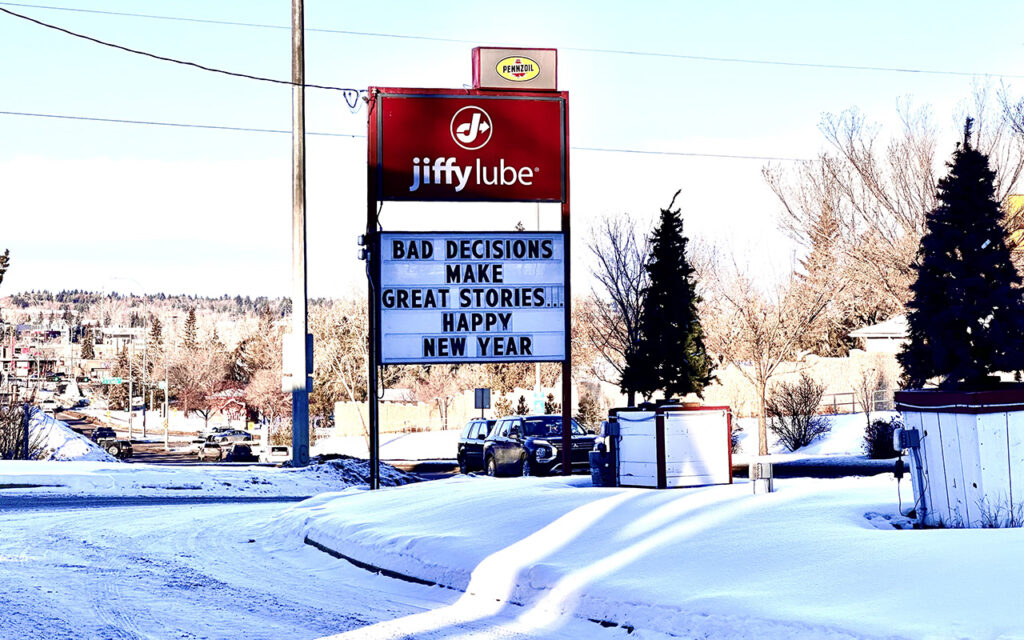
I chuckled at a sign near my home: “BAD DECISIONS MAKE GREAT STORIES.”
The message continued to play around in my head because I found it SO true in product development.
Every veteran innovator I know has a treasure chest of rip-roaring failure stories that shaped their future successes.
Like the inventor who spent a fortune on travel, engineering, patents and manufacturing before testing if the product worked reliably in all necessary use cases. (It didn’t.)
Or the founder who ordered 100,000 units based on enthusiastic feedback from friends. (Most of those nicely boxed devices are probably still in his garage years later.)
In I Need That, I share how our tank brain looks for trust signals before letting the dog brain get excited about a purchase. Watching others fail helps build those signals – if we’re paying attention.
Some of my favorite product pivots came from total face-plants:
- Slack emerged from the ashes of a failed gaming company. The internal communication tool they built to manage game development became worth more than the game could ever be.
- Shopify wasn’t even meant to be software. The founders just wanted to sell snowboards online, but couldn’t find good e-commerce tools. The platform they built for themselves became their real business.
- Twitter rose from Odeo, a podcasting platform that lost its core market when Apple launched iTunes podcasting. The team’s two-week hackathon to find a new direction spawned a social media giant.
- Instagram started as Burbn, an overwhelmingly complex check-in app with photo features buried inside. When they noticed users ignoring everything except photo sharing, they stripped away the bloat and struck social media gold.
- YouTube’s founders thought they were building a video dating site. Their original slogan was even “Tune In, Hook Up.” When random videos started getting more action than dating profiles, they followed the users’ lead.
The key is seeing the opportunity, owning the mistake — and failing into a better direction. Each mistake teaches us something about what customers truly need versus what we think they want.
Action for you: Is there anything in your discard pile that’s worth trying from a different angle? When users take a pass, what do they reach for instead? Is there a feature that’s unexpectedly stronger than all the rest? Don’t just think about it. Point it out to someone else (like a partner — or me) and see if you’re on to something.
Laurier
P.S. The best stories often start with “In hindsight, this was obviously a terrible idea…” What’s yours?
